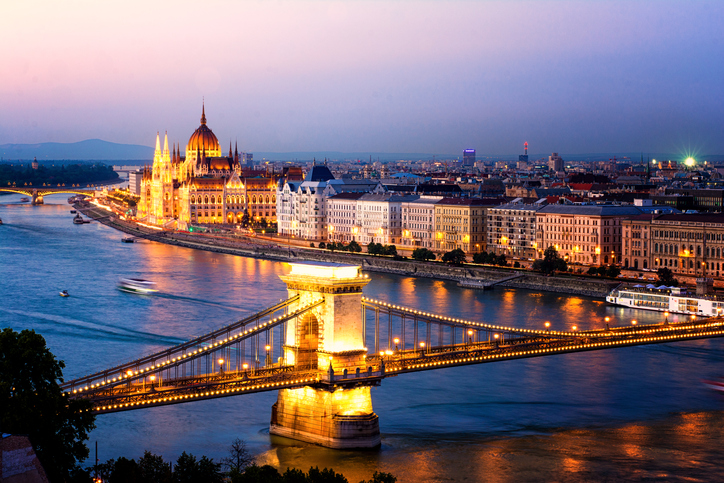One of the most popular routes to get a real feel for central Europe is to visit Prague, Vienna and Budapest. The Hungarian capital is the biggest of the three and boasts many sites of historical interest to visit. You’ll need a few days to fully discover Budapest, but if you’re stuck for time, you can always just choose a selection of the best the city has to offer.
Our visit begins with the Hungarian Parliament, completed in 1902; it’s one of Europe’s most beautiful Neo-Gothic buildings and is one of the most emblematic places in the city. Guided tours are available in several languages, except when there are parliamentary sessions in place. The main entrance is inspired by the Houses of Parliament in London and guarded by two huge statues of lions. Once you step through the door, an abundance of spaces and treasures wait to be discovered. The main stairway, covered in red carpet gives off a very welcome feel that leads on to the Cupola Hall (with several statues of Hungarian kings) and the old Upper Chamber.
St. Stephen’s Basilica is one of the tallest building in the city (96m) and also the largest religious building in the country with room for up to 8500 people. Main attractions include the Neo-Renaissance cupola decorated with mosaics, the main altar, and its large collection of paintings.
The Buda Castle referred to in the past as the Royal Palace, is another of the city’s top tourist attractions. It’s the old residence of the Hungarian Kings and today houses the Széchenyi Library, the Hungarian National Gallery and the History Museum. At night, it’s lit up together with the Chain Bridge and provides one of the most beautiful views of the city.
To learn more about the turbulent history of the country, there’s nothing better than a visit to the Hungarian National Museum, representing the country’s trajectory up until 1990. It’s one of the city’s most impressive Neo-Classical style buildings and is filled with marble columns and paintings covering its walls.
Music lovers will surely enjoy a visit to the Neo-Renaissance Hungarian State Opera House, which was first opened to the public in 1884 and architecturally speaking, today remains one of the best in the world. The building alone is worth a visit, but if you can, try to get tickets to see an opera or ballet as even the best seats are not that expensive.
And after walking the city from top to bottom, you’ll surely feel like taking the weight off your feet and relaxing a little. One of the best activities for this is a scenic cruise on the Danube with different options available including drinks or a buffet dinner.
And to top off your visit, there’s nothing better than a relaxing bath. Budapest was named the International Spa City 1934 and has 118 natural and man-made springs. The Gellért Baths, originally built in 1927, are probably the most well-known and still retain a certain air of antiquity today. It has indoor and outdoor baths and pools, a café and a restaurant.







